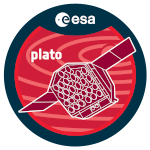Due to an ill-depicting model of the convective layers below the photosphere and a misrepresentation of the coupling between convection and oscillations, a well-known deviation appears between observed and theoretical frequencies which grows towards high frequencies; the so-called surface effects. Alongside the frequency, convection also impacts the damping rate of the modes and represents an important part of the driving mechanism behind the stellar oscillations of low-mass stars. With the increasing observational capabilities at our disposal nowadays with Kepler and TESS, this constitutes the main limitations to accurate seismic probing of solar-like and red giants stars. In this talk, we will present the formalism of an innovative approach that changes the current paradigm by going 3D. This new formalism consists in an original non-adiabatic 3D time-dependent convection model for asteroseismology that we are currently developing. To tackle the current issues, we aim at keeping the entire 3D structure of the astrophysical flow in these superficial layers to fully account for the nature of turbulence in our model via the use of advanced hydrodynamic simulation CO5BOLD. Making use of the perturbative approach alongside the introduction of spectral decomposition, we bring forward a new formalism describing standing waves in 3D which is set to solve the global non-adiabatic oscillation equations in a full 3D framework. We show the importance of working in a 3D space and how it allows us to stay as close as possible to reality. We present some preliminary results of the model: the impact of this 3D structure on modes frequencies and damping rates as well as the computation of 3D eigenfunctions. We discuss the impact of the main hydrodynamic simulation characteristics (resolution, time,...) on our results. Finally, we establish how our formalism is able to precisely locate regions of driving and damping of the modes in this 3D environment and detail the different physical contributions to the damping of the modes.

 PDF version
PDF version
